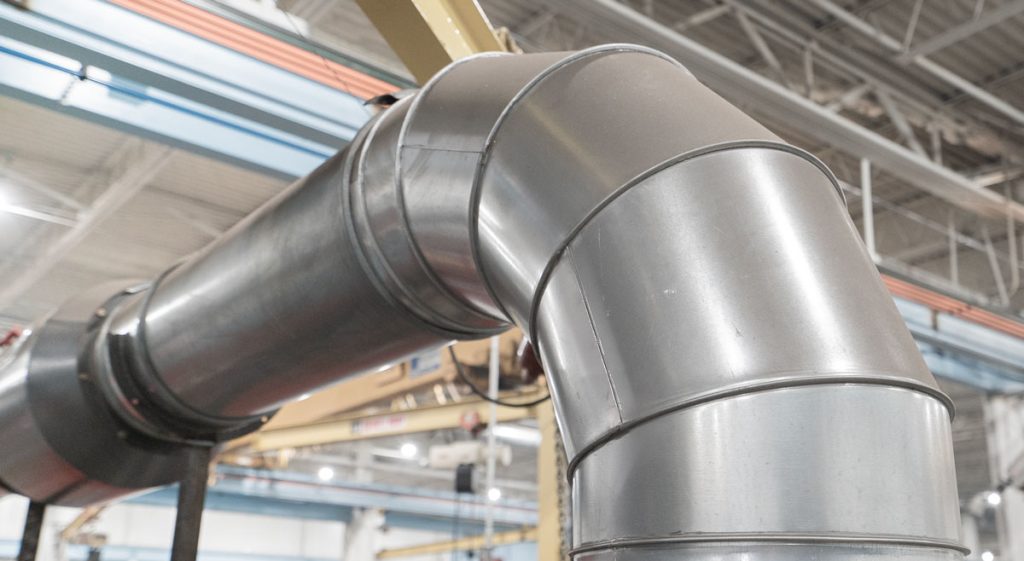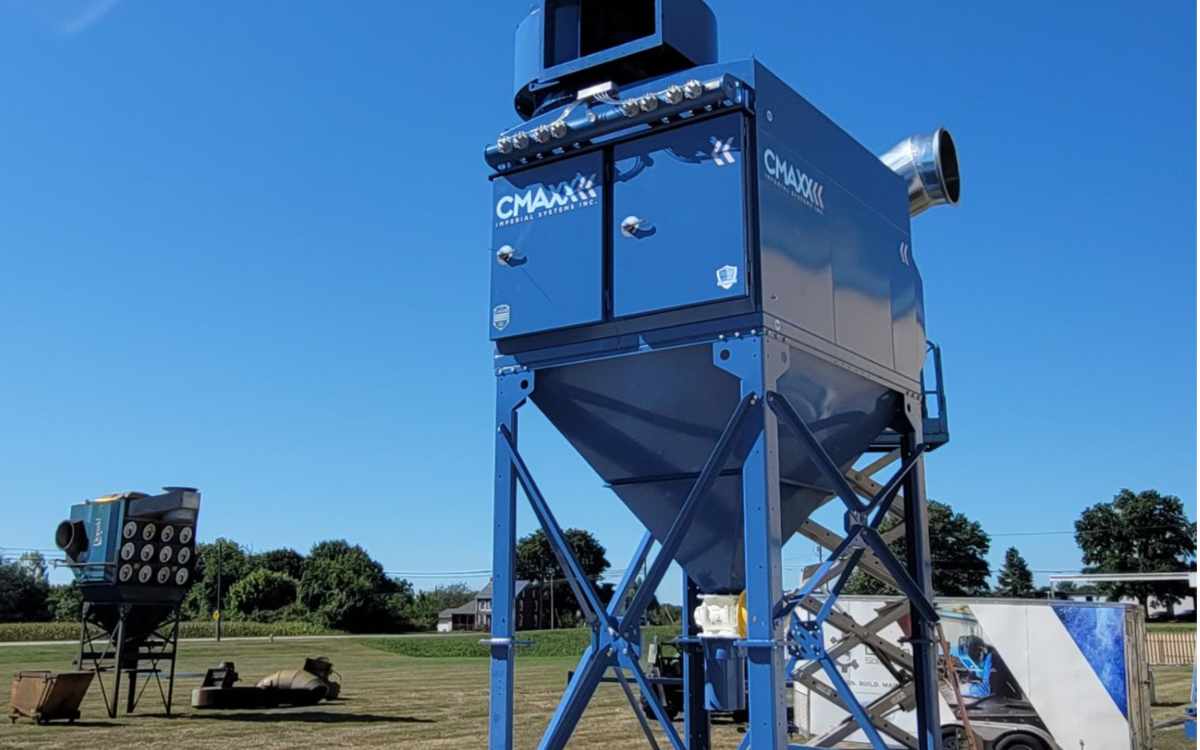What is Static Pressure in Reference to Dust Collection?
Static pressure is the force exerted by a gas or fluid, such as air, against an object. Its measurement is in inches of water gauge (in. w.g). In the context of dust collection, static pressure refers to the amount of resistance that the dust collection system’s ductwork and filters are exerting on the airflow. This resistance can come from a variety of sources, including the length and diameter of the ductwork, the type and condition of the filters, and the presence of bends or elbows in the ductwork.
 Effects on Airflow and Suction
Effects on Airflow and Suction
Understanding and managing static pressure is crucial for effective dust collection. If it is too high for the fan to overcome, it can reduce the airflow and decrease suction. Loss of suction makes it more difficult for the dust collector to remove dust particles from the dust generation source. Another problem with suction loss and reduced airflow is that dust can settle and clog the ductwork. This can lead to poor air quality or other unwanted consequences.
On the other hand, if your fan is too large for the static pressure in the system, it can cause the dust collector to be energy inefficient, resulting in increased energy consumption and higher operating costs.
Keep Static Pressure in Check
To ensure optimal performance and efficiency, it is important for controls to regularly measure and monitor the pressure in your dust collection system. Do this manually by using a manometer or a pressure transducer. These tools can be used to identify areas of the system that may be causing excessive resistance and determine if they require maintenance or replacement.
Another way to reduce static pressure is to use a high-efficiency filter or a filter with a higher filter area. Both the CMAXX Dust & Fume Collector and Shadow Compact Fume Extractor use our DeltaMAXX Prime cartridge filters, which have 400 square feet of media per filter. This allows our systems to maintain a lower static pressure drop and increase the airflow while still capturing the dust particles.
It is important to consult with an air ventilation professional when planning a dust collection system. To help reduce static pressure requirements you should use a properly designed dust collection system that has adequate duct size, smooth transitions, and a minimal number of elbows. Static pressure in a dust collection system can vary depending on the type and size of the ductwork, as well as the connected hoods, machines, and conditions.
Static pressure plays a crucial role in the performance and efficiency of your dust collection system. By regularly measuring and managing static pressure, you can ensure that your system is working at its best, and avoid potential problems such as reduced airflow, increased energy consumption, and higher maintenance costs. Our team of dust collection professionals is here to help you design a system that is the most efficient and effective solution for your facility.


